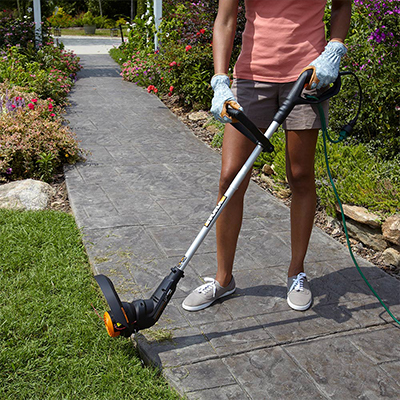Pole Saw Buying Guide
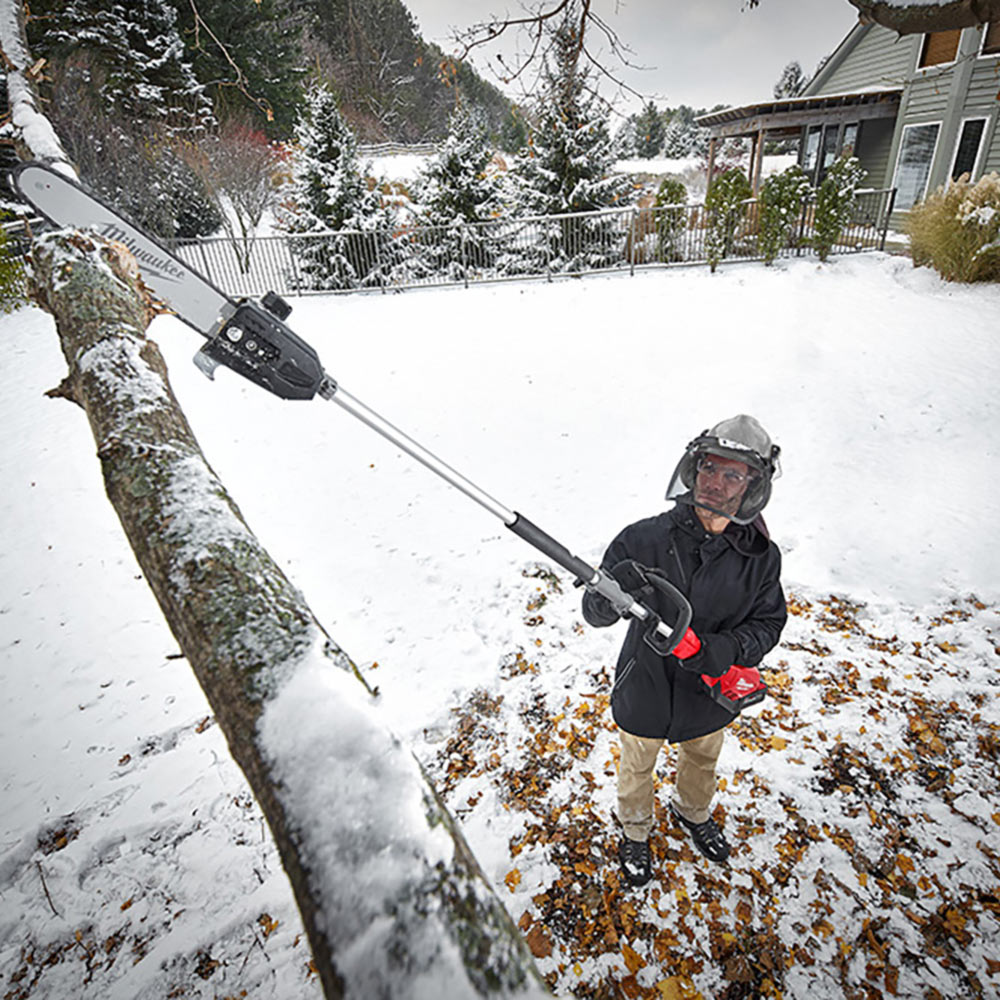
Last updated September 7, 2023
A pole saw is a standard saw attached to the end of a long handle. They’re used for cutting tree branches and shrubs that are beyond your reach. Pole saws are a handy addition to any tool collection, especially when you have a lot of landscaping to maintain. Many different pole saws are available on the market, making it easy to find one that best fits your needs. Whether you need to trim some unruly trees or shape your shrubs, a pole saw will help you get the job done. This pole saw buying guide will help you determine what type of pole saw is right for you.
Table of Contents
How Pole Saws Work
When to Use Pole Saws
Assess Your Needs
Set a Budget
Types of Pole Saws
Pole Saw Accessories
How Pole Saws Work
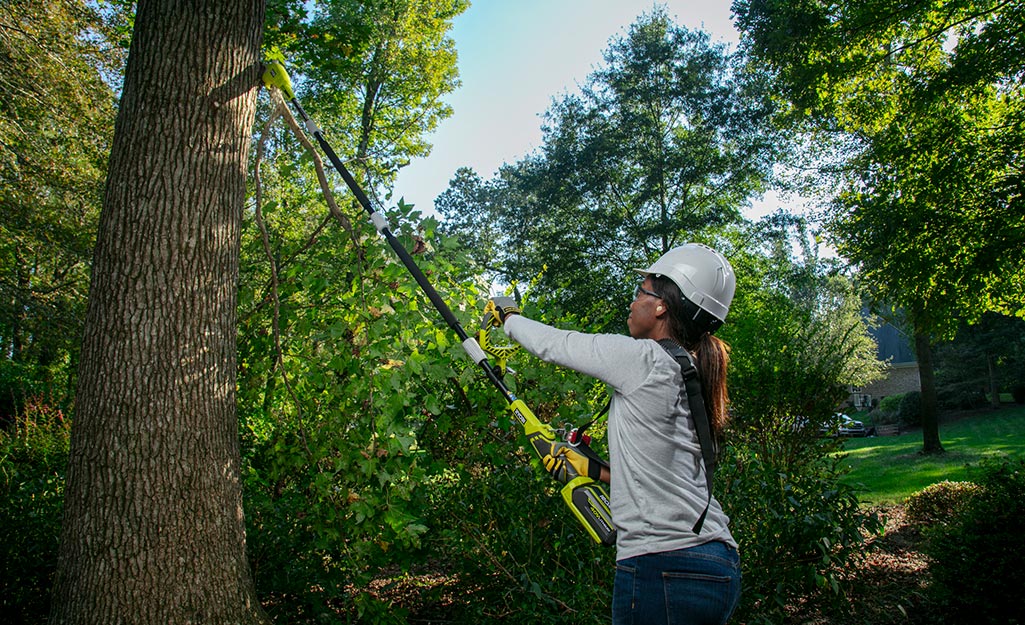
A pole saw is a standard manual, gas or electric-powered saw attached to a long arm that extends your reach. The saw is securely attached to the pole arm, typically using a screw-in design for a tight, safe fit. Many pole saws can be angled to make reaching individual branches easy.
The pole works as an extension of your arm. This allows you to trim broken, dead or unruly branches from trees, bushes and shrubs.
Pole saws are an alternative to using a ladder and standard saw to shape trees. Most pole saws have a mechanism near the handle that allows you to control the speed of the saw as you shape the landscape. They usually also include a safety mechanism and power lock.
When to Use Pole Saws
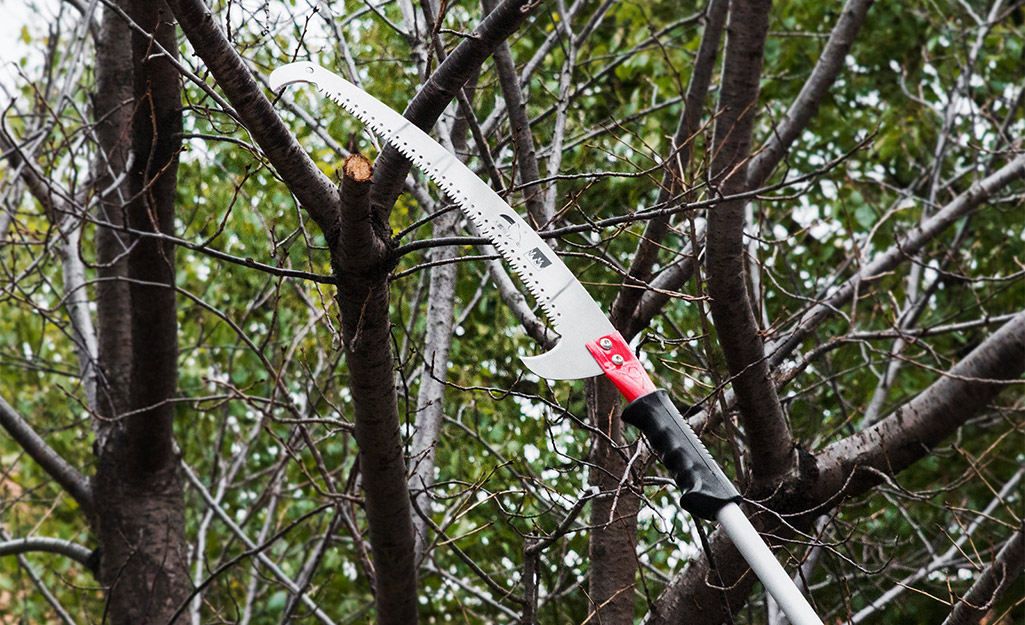
Pole saws are used for trimming landscaping that extends much higher than your natural reach. Rather than using a ladder, use the pole saw to reach higher without creating a safety concern. Use a pole saw to remove or prune tree branches or clean up the edges of bushes and shrubbery. Pole saws help maintain clean and gorgeous landscaping at a lower cost than weekly or monthly professional services.
Tip: Pole saws are also a handy tool to have after a heavy storm. They are very helpful when you need to cut down larger debris or remove unsafe tree branches.
Assess Your Needs

Before shopping for a new pole saw, there are a few factors to keep in mind:
- Yard size: Do you have a large yard with mature landscaping? The larger the yard and the more trees or bushes you have, the more powerful your pole saw should be.
- Tree coverage: If your yard has many older, large trees or substantial foliage, a long or adjustable pole saw is your best bet. If you need to use the pole saw in several places around your yard, a cordless pole saw could be helpful for mobility.
- Frequency of use: Do you plan to use your pole saw regularly? A gas-powered, durable pole saw may be the best choice for you. If you know you’ll only need your pole saw every once and a while, choose an electric model.
Tip: If you only need a pole saw for one job, The Home Depot offers tool rental. Rent a pole saw to get your project done. Use once, then bring it back with no maintenance required.
Set a Budget
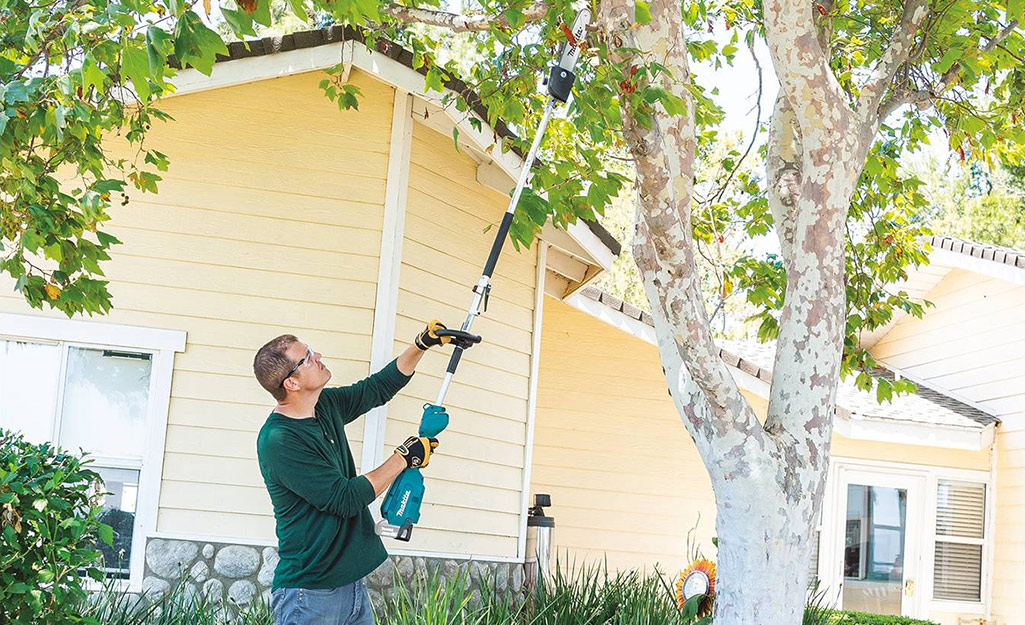
Pole saws range in price. How often you use the saw, your budget and the special features you’re looking for will affect the price point. When setting a budget, think about how much you’ll use the pole saw versus how much it will cost upfront.
If you need a pole saw for frequent yard maintenance, spending a little more upfront will get you a more durable tool that will last longer. If you only need it every once and a while, or for emergencies, a wallet-friendly or compact model is a great option.
Types of Pole Saws
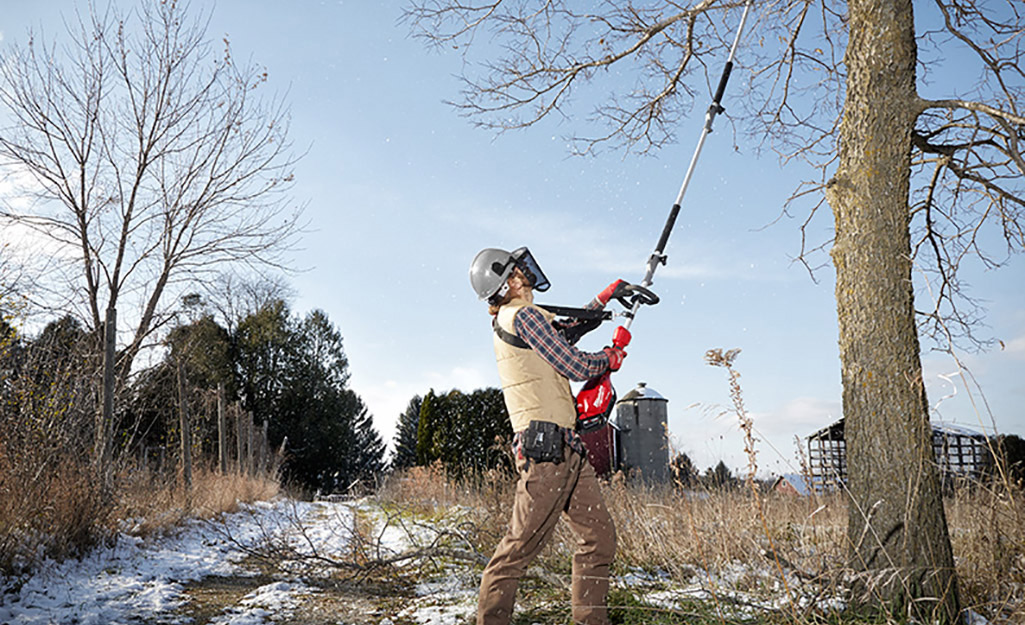
There are three main types of pole saws available:
- Corded electric pole saws: If you have a smaller yard or a lot of easily accessible outdoor outlets, electric pole saws are a great choice. They are typically quieter and lighter than gas pole saws. They work well for occasional use. Electric pole saws are easy to start and operate. They’re handy for jobs that pop up every now and then. Usually, electric-powered pole saws are more budget friendly than other models. Electric pole saws can’t be used in wet conditions, however.
- Cordless electric pole saws: Ideal for medium to large yards, cordless pole saws rely on a rechargeable battery for their power. The batteries are Lithium-Ion or Ni-Cad models that range from 20 to 40 volts. Cordless pole saws work best on branches between three and eight inches in diameter. They’re great for occasional use and pruning shrubs. They require very little maintenance and are more portable than corded or heavier gas-powered options.
- Gas pole saws: The model most often used by professionals, gas-powered pole saws are more powerful and durable than electric models. Gas pole saws are powered by two-cycle engines and run a mixture of oil and gas. They require more maintenance than electric models, but they are far more powerful. They’re great for larger yards with bigger trees and can operate for hours. Heavier than other options, between 14 and 30 pounds, a gas-powered pole saw can cut through larger branches and limbs.
Tip: Electric and cordless pole saws can’t be used in wet conditions. If you know you’ll need to use your pole saw in all kinds of weather, a gas-powered model is the best choice.
Pole Saw Accessories

The right equipment is important for operating your new pole saw safely and efficiently. Depending on the model you get, a few accessories can make a job easier and faster:
- Outdoor extension cords: Outdoor extension cords will lengthen the reach of your corded pole saw. Get weather-resistant, durable extension cords to keep your power supply sturdy and safe.
- Gas and oil: Every gas-powered pole saw will have different suggestions for the best gas and oil to keep it running smoothly. Use a minimum of 89 octane gasoline and use fresh fuel. Only grab enough oil to power the pole saw for a two-month period, based on how often it's used.
- Backup batteries: Backup batteries and battery chargers will make it easier to use your electric pole saw longer. Keep at least one charged backup battery on hand so you have the power you need to complete a job.
Pole Saw Safety

Using a powered blade to trim trees and bushes above your head can be dangerous. Working safely is important. If a particular job ever seems unsafe or is close to the edges or roof of your home, it’s best to call a professional. Before you use your pole saw, consider where debris could land. If what you cut might end up on sidewalks, streets or neighboring properties, you may want professional help.
Follow these safety tips when operating your pole saw:
- The thicker the branch, the longer and more tiring the job will be. Thick branches also fall faster and have more potential for damage as they fall. For extra-thick branches, consider hiring a professional company for safer removal.
- Wear safety equipment when operating a pole saw. Hard hats keep your head safe from falling tree limbs or other debris. Safety goggles protect your eyes during the trimming process.
- Never trim trees near power lines. If you need a tree or bush trimmed that’s near or hanging over power lines, it’s time to call in a professional.
A pole saw can help you keep your trees, shrubs and bushes trimmed. Assess your yard’s needs to choose the right saw for you.
Ready to get a pole saw for yard maintenance? The Home Depot delivers online orders when and where you need them.





